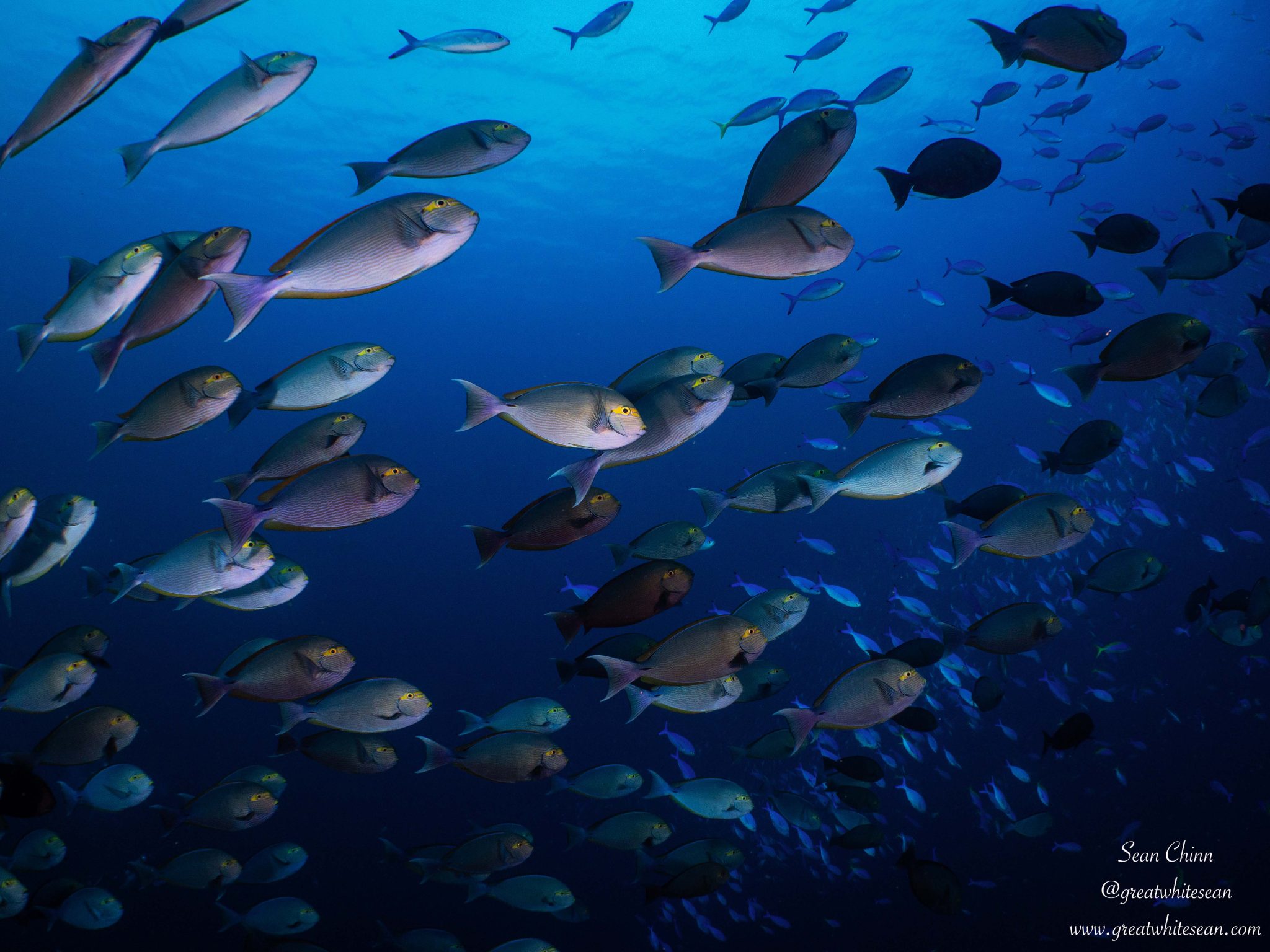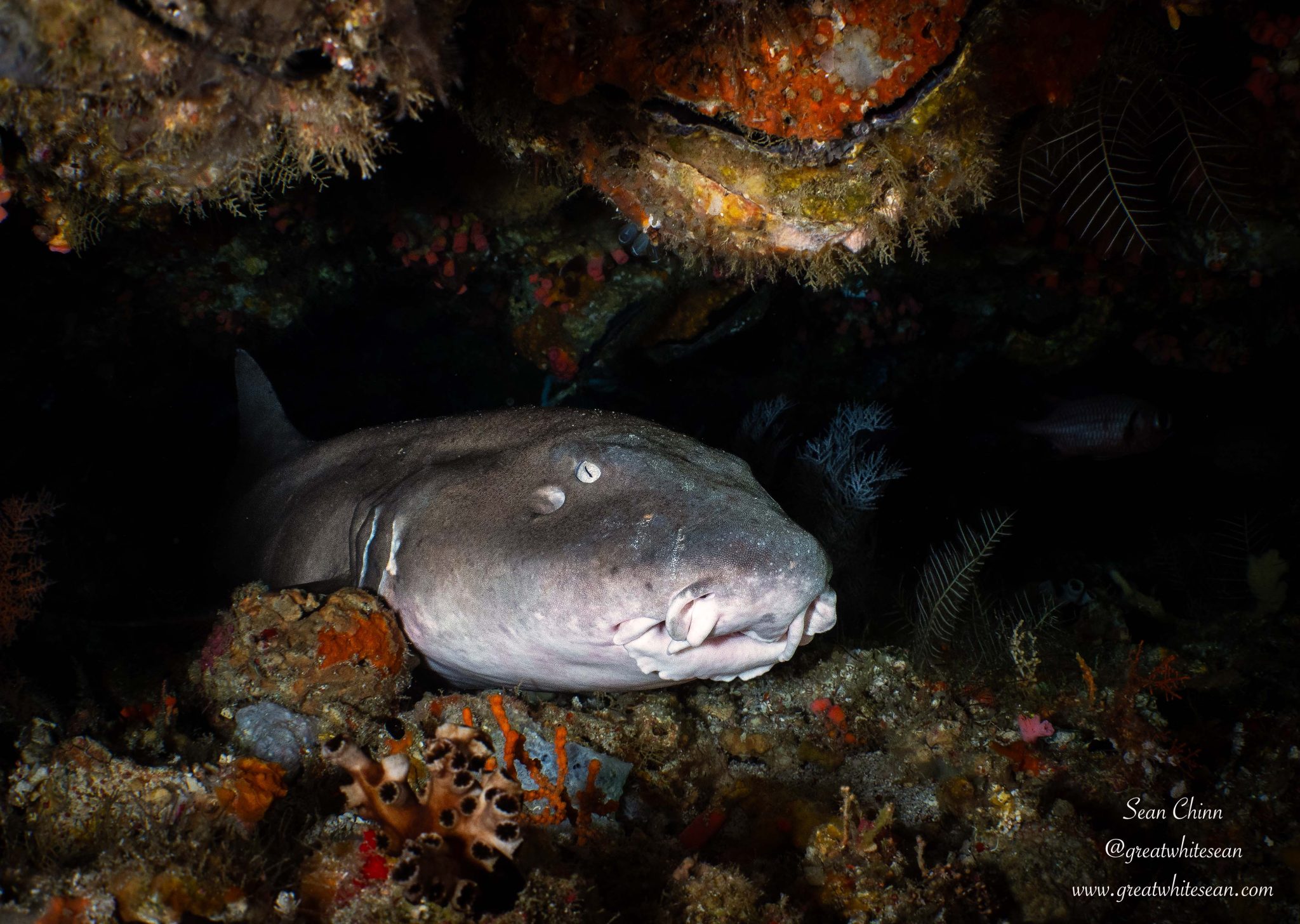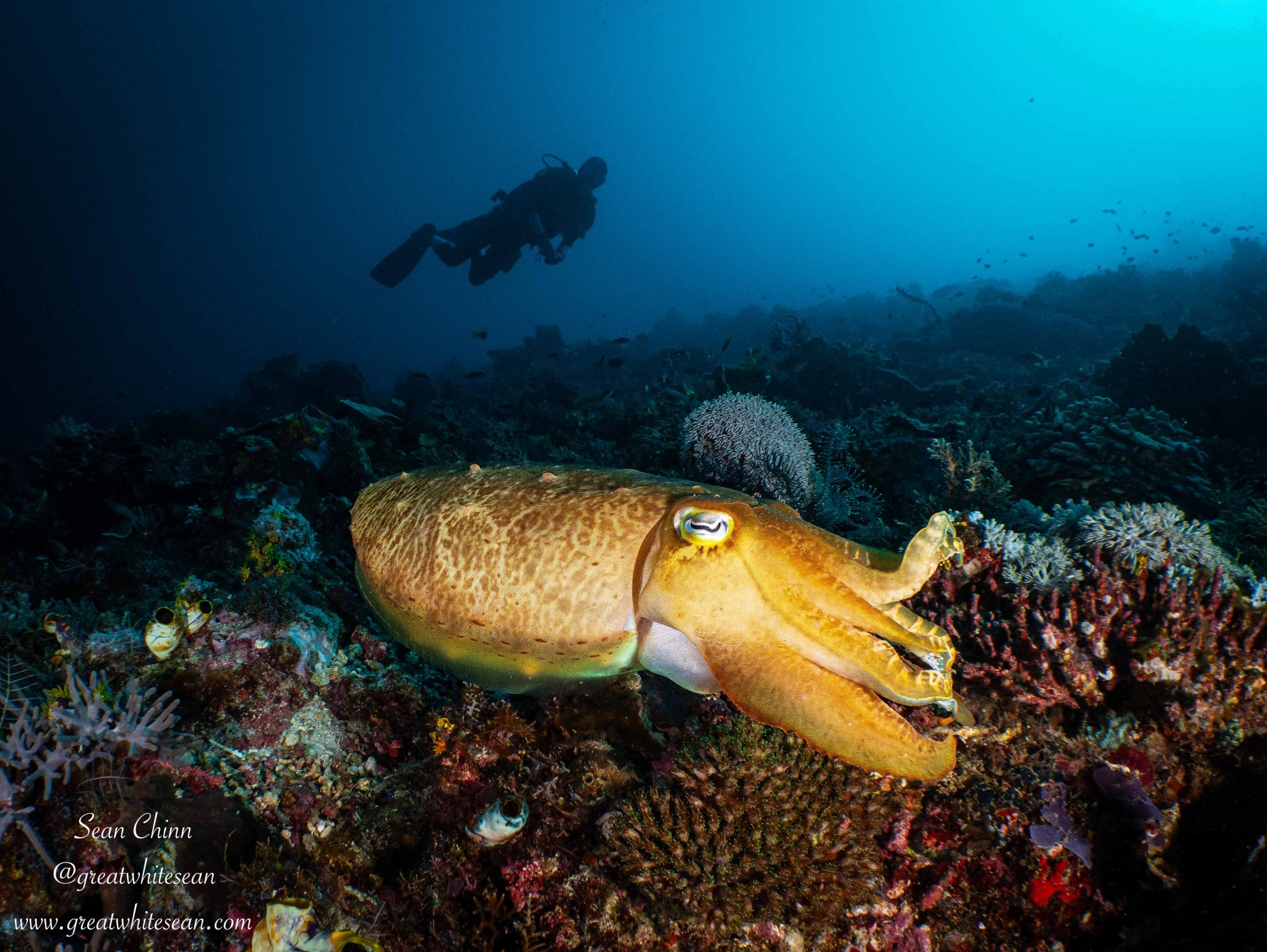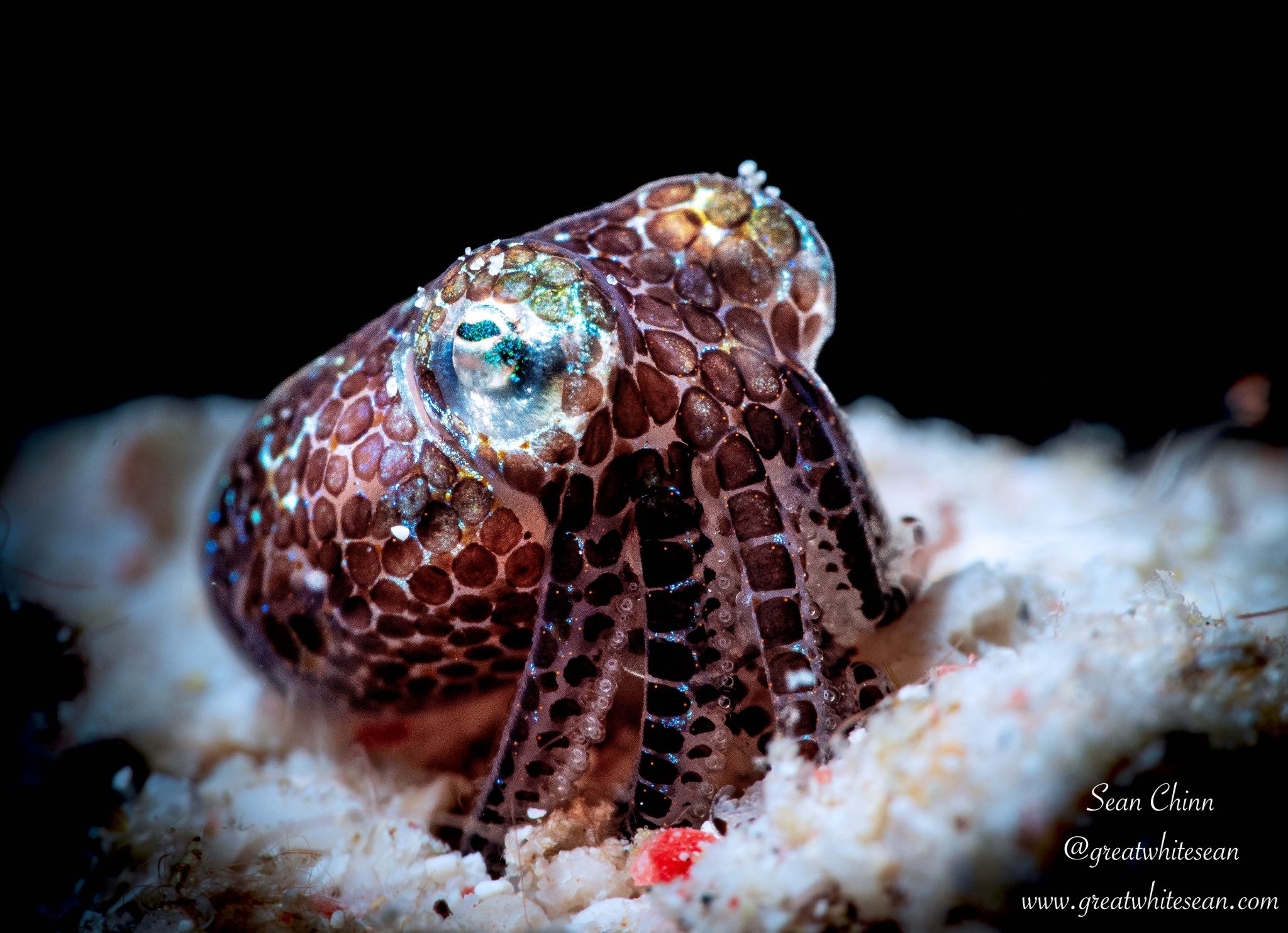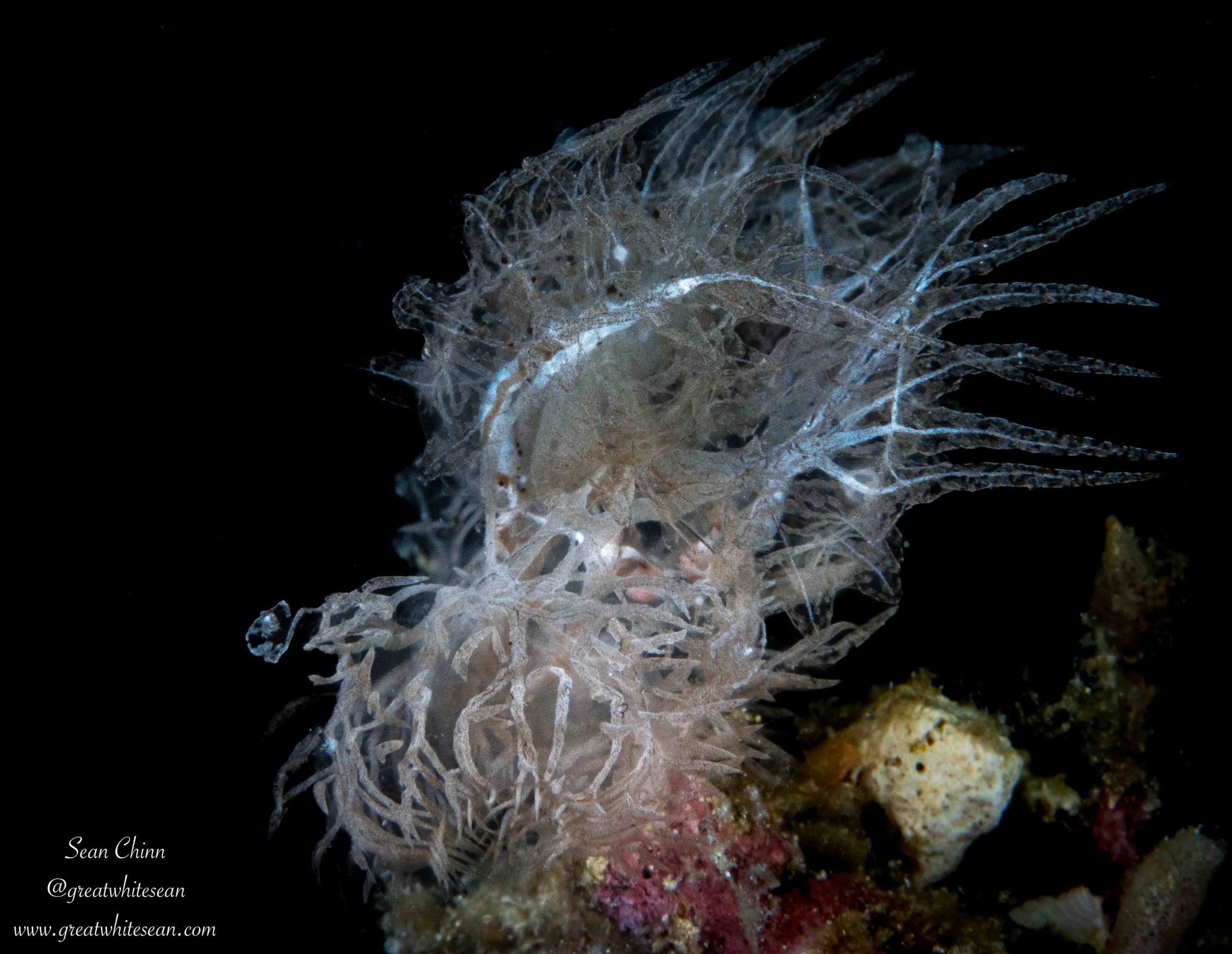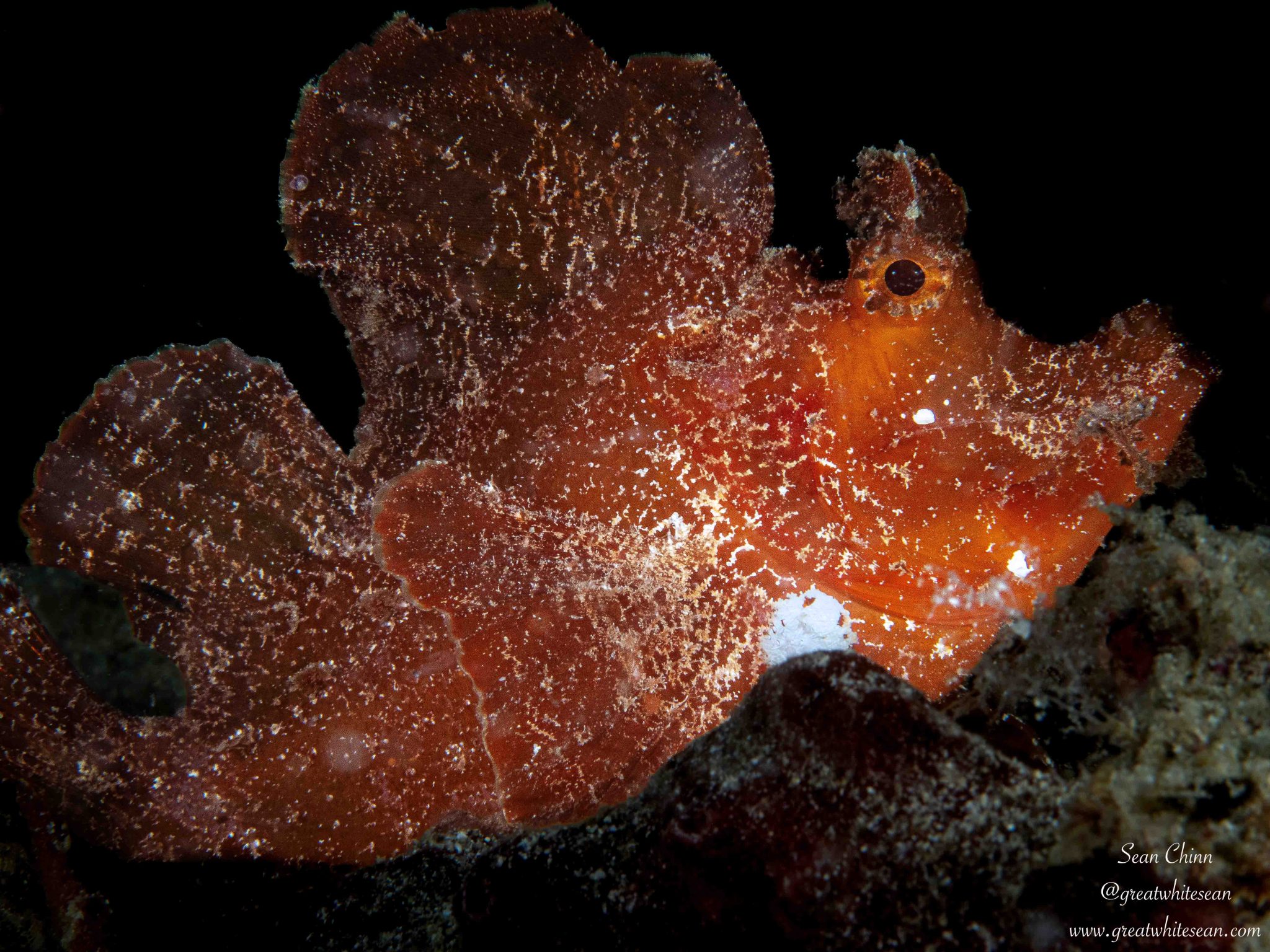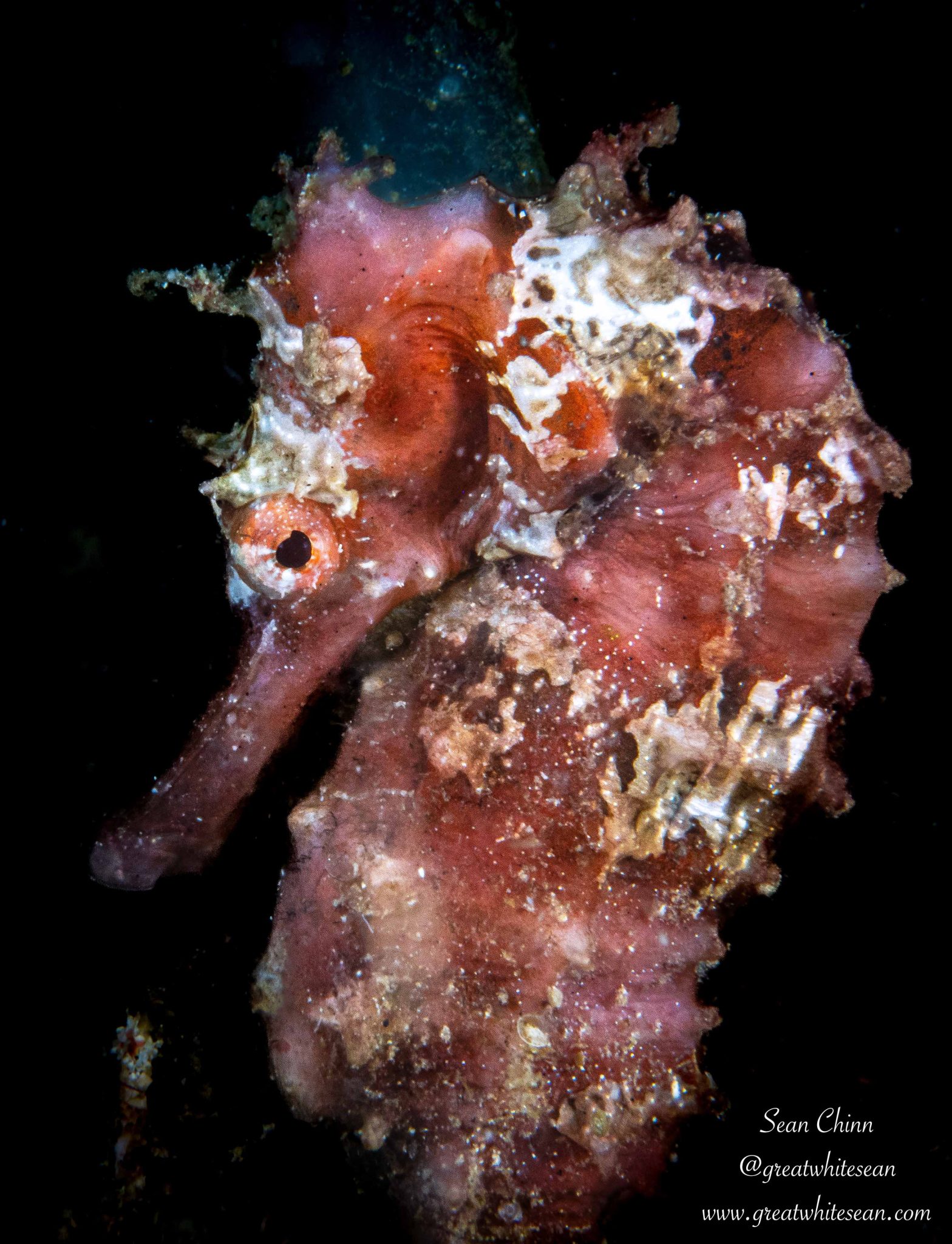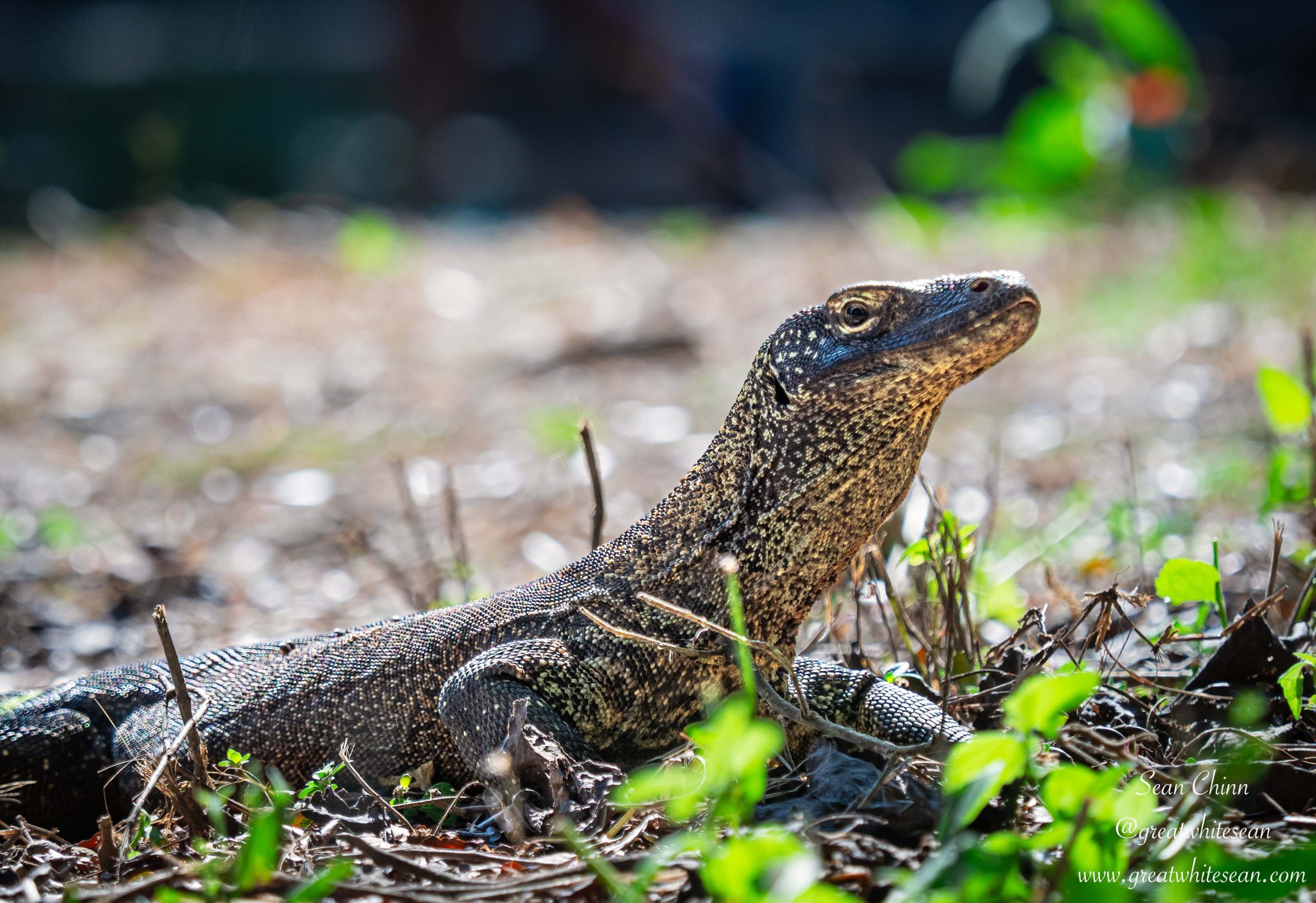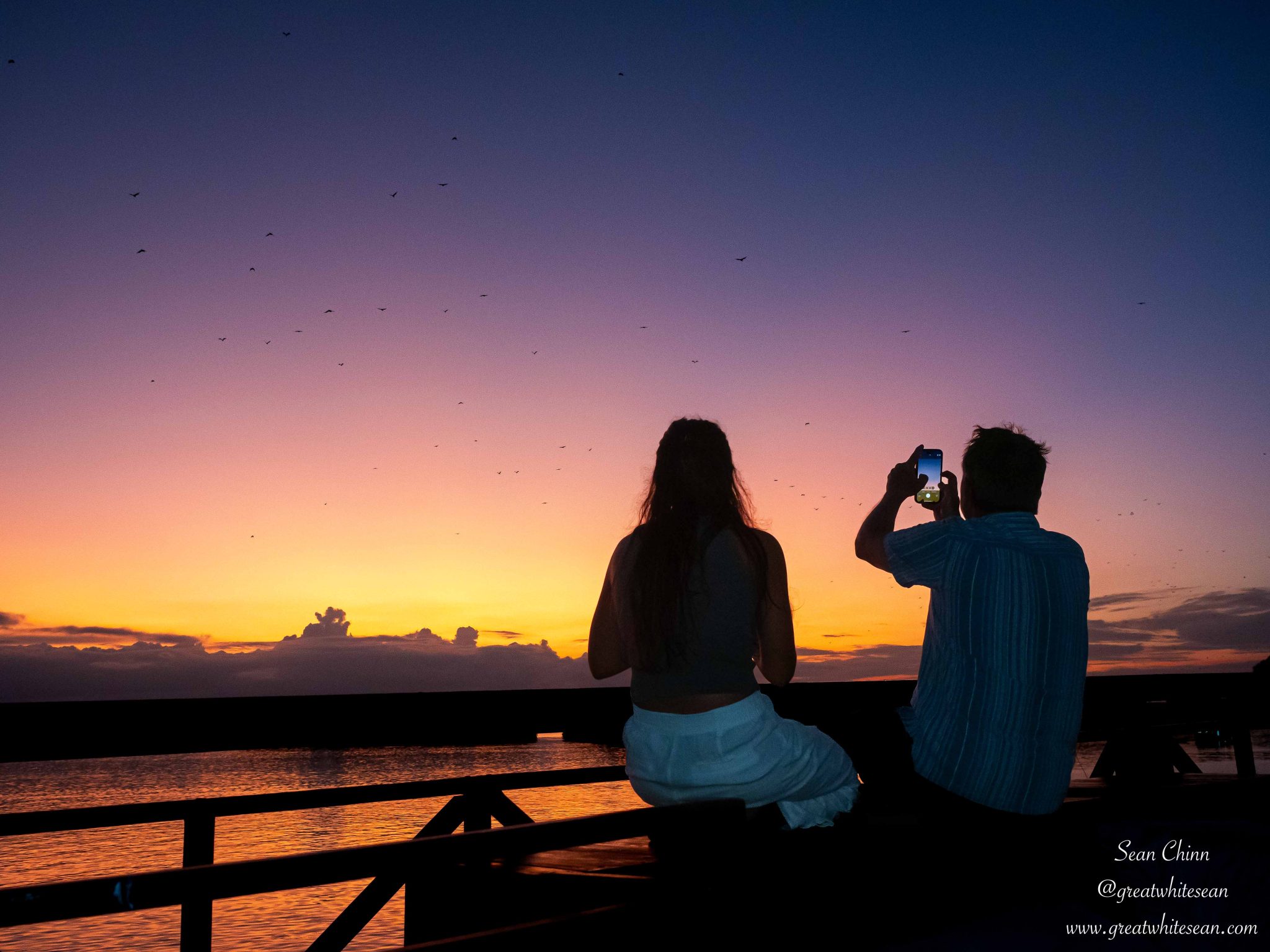News
A Welcome Return (Part 2)
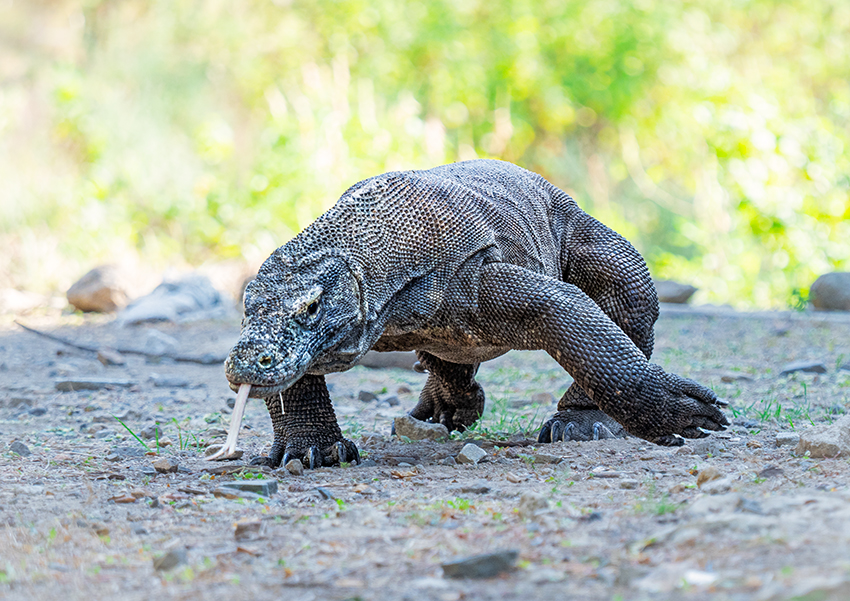
I’m hoping by now you would have read Part 1 of my ‘A Welcome Return’, all about joining La Galigo Liveaboard once again, but this time exploring the delights of Komodo National Park.
The trip was really starting to hot up, with great scenery above the water and great encounters underwater. It was the little critters that were stealing the show and it was about to get even better. Here is how the rest of the trip panned out…
I was more than psyched for day 3. With a dive full of life to start with at ‘Castle Rock,’ followed by what should be an adrenaline-fuelled drift at ‘The Cauldron’ aka ‘Shotgun’, It was sure to be an adventure. Sure enough, once we descended along the pinnacle at ‘Castle Rock’ to around 25 metres, we were surrounded by an abundance of fish life. Numerous banner fish, schools of fusilier and surgeonfish swam in unison, while the odd friendly batfish would come to check each diver out. A distant school of jackfish were joined by the odd tuna and a circling whitetip reef shark to add the predators to the list of life. It was such fun floating amongst the amount of life before letting the current take us onto the reef. A few macro delights were waiting, as a blue ribbon eel and leaffish were spotted, alongside a friendly hawksbill turtle. This was certainly a dive that didn’t disappoint.
It was time for ‘The Cauldron,’ a notorious dive that struck fear into the hearts of some and was legendary to others. Tales of masks flying off in the current made for a little nerves before descending, but excitement from others about how the drift can shoot you through the channel between Gili Lawa Laut and Gili Lawa Darat. However, it was a little different for my dive and the current was fairly mild in comparison to what I expected. It still had enough current for a nice push through the channel and also provided some great marine life encounters. Another new shark species for me was a major highlight, as I finally got to see and photograph a bamboo shark. It was also the site for our only manta ray encounter of the trip. Unfortunately, the manta had passed my group before we saw it and we only got the tail end as it glided through the current away from us. A smaller mobula ray was also spotted at a distance, and a small school of bigeye trevally before… you guessed it… yet another friendly hawksbill on the safety stop.
Day 3 was becoming the best diving day so far and I’d say the next dive at ‘Golden Passage’ was my favourite wide angle dive of the trip. I just love cephalopods and am a big fan of cuttlefish. Three rather large broadclub cuttlefish at the very start of the dive were more than welcome and provided great photography opportunities. We then had an amazing drift along the passage with a bit more oomph than ‘Shotgun’. More hawksbill turtles along the way, a sleeping bamboo shark in the overhangs, and a dancing school of fusiliers provided extra marine life joys. We finished the diving day with a night dive at ‘Gili Lawa Darat Bay’. Wow!!!! Once again, critters stole the show, along with a rather successful bobtail squid snooted photography shoot for me. Devil scorpionfish, nudibranch, flatworms, shrimps, squat lobsters and juvenile harlequin sweetlips made sure every single minute was interesting.
After a short documentary about Komodo dragons on the evening of day 3 to get us excited for seeing them, I was definitely more than excited! Day 4 was a day of giving it our best shot to get some great manta ray action. We started with another beautiful pinnacle reef around ‘Crystal Rock’. Small school of batfish, Napoleon wrasse, whitetip reef sharks, a blacktip reef shark and lion fish greeted us, before we moved on to try for mantas once again. Back to ‘Karang Makassar’ and a drift along the sand and rubble, passing small sections of coral formations that would act as cleaning stations. Unfortunately, we were once again unlucky with our manta ray sightings but this dive did deliver more interesting encounters: A bamboo shark resting out in the open before swimming off, green sea turtles, hawksbill turtles and, once again, a large broadclub cuttlefish.
A final day dive at ‘Mauan’ in the hope of seeing mantas wasn’t much to write home about in this instance. We gave it our best shot with the mantas and that’s all we can ask of the accommodating crew onboard. Unfortunately, wildlife doesn’t always play ball and on another trip you could have some of the best manta ray action of your life. However, the final night dive of the trip more than made up for it. Wow, wow, wow!!! What a dive! With some of the most unique critters you can find. So much so, I have been asked to keep the dive site quiet in fear of the information getting to the wrong people and bad practice being at play. A shame it has to be that way but a necessity at times. While numerous species of nudibranch were spotted on the dive, it was the elusive ghost melibe that stole the show. A transparent nudibranch made up of white lines, giving it a skeletal appearance that was hard to photograph but soooo exciting to see!
The unique critters didn’t stop there, as another highlight macro critter – the paddle flap scorpionfish – was spotted to the excitement of the guides and cruise director Fareez, who screamed and danced (with excitement!) underwater. Definitely a sought-after critter in the underwater photography world, and we had two join us for the dive. There was a lot of sand and sediment in the water, making it difficult for photography and I wasn’t completely ecstatic with the shots I got, but loved to see another new-to-me species. But guess what? The fun didn’t stop there, as a black frogfish was sitting under some broken coral just next to the scorpionfish. WHAT A DIVE!!!!!!
After such an incredible final night dive, the final day also finished the trip in incredible fashion, ensuring the need to return was firmly there. Starting with a first dive at Pengah, where a banded sea krait hunting throughout the reef was a great start, and more colourful coral formations around the pinnacle, with amazing hard coral just below the surface. It was a dive for wide angle and macro, as ladybugs, different nudibranch, and a leaf scorpionfish were found. As well as a large octopus working its way through the reef before hiding when we locked eyes. The final dive really put the icing on the cake. It was a macro dive amongst sand and rubble: numerous nudibranch again dazzled, with the ‘Pikachu’ nudi my favourite. Peacock mantis shrimp, spearing mantis shrimp, longhorn cowfish, orangutan crab, squat lobster and shrimp ensured a special dive before the grand finale – a thorny seahorse. What a dive and what diving for my five days in Komodo National Park.
Well, the diving might have been over, but the trip certainly wasn’t. In fact, it was time for one of the tours I’d been looking forward to the most. Time to see Komodo dragons on Rinca Island. As much as I love liveaboards, it’s always nice to get back on land. A jetty led us onto a boardwalk path, where within minutes we laid our eyes on our first dragon, before getting closer to the information centre and seeing the big male that commands the area. Sprawled out on the floor, his size was immense. A great start but I longed for those close encounters and not looking down from a platform.
We were soon through the information centre and onto the wild ground to start our very short trek. We didn’t need to go far at all as a resting large female was just next to the information centre, followed by a small juvenile who came running through stealing all the attention. It was a little cutie and fun to see and photograph. Being a photographer, you always have images in mind before you go somewhere. I was desperate to get a large dragon postured up facing or walking to the camera. I quickly realised that these were lazy animals in the midday sun (as am I). It’s too hot and they risk overheating if they’re too active. I began to lose hope for the shot I wanted, as we trekked a short while up the hill and found another resting female. Amazing to see once again before it was all too soon ready to leave. I could have trekked so much more of the island.
As we waited around the outside seating area of the information centre, I was going through my shots with Fareez and explaining the shots I was hoping for. He said maybe I would get lucky while we waited for the others to explore the gift shop. I knew I didn’t have long. Suddenly, some commotion back outside on the wild ground caught my attention. DOUBLE JACKPOT!!! I went flying out of the gate and there was a dragon walking directly towards me. Postured up, showing off its muscles, only made better by the fact that it was the huge male that swaggered into his arena. Showing off to his adoring crowd. I was completely made up and thankfully got some shots I was happy with. He slowly walked around using his tongue to taste all the flavours, before finally slumping on the ground, sprawled out in the shade.
My trip was now complete, or so I thought. I got what I wanted and was happy to return to my family completely content (apart from losing my drone that is!) That was until the grand finale, the little extra I didn’t know I needed, but it’s always those moments that separate a great trip from an unbelievably fantastic trip. The little extras that make you long to return.
Moored up at Pulau Kalong under an amazing sunset, we waited for the show to start. A spectacle that only nature can deliver soon ensued, as thousands upon thousands of flying foxes left their daytime roost on the island. Engulfing the orange sky with black silhouettes akin to the batman sign. They just kept coming and coming for the next hour or so before we enjoyed an amazing BBQ dinner on the top deck and an incredible show of songs and dance from the amazing crew. Another fantastic trip onboard La Galigo and I can only hope I’ll be back soon.
For more information about diving in Komodo:
Sean Chinn Instagram: @greatwhitesean
Email: sean@greatwhitesean.com
Whatsapp: +62 812 2000 2025
News
Book Review: Fire on Monroe Bravo by Fred Lockwood

Fire on Monroe Bravo is the latest book in the Jack Collier series by Fred Lockwood. Our story begins with our lead characters, Jack and Sandro, owners of Marine Salvage & Investigation Company, arriving on the Monroe Bravo Oil & Gas Platform in the North Sea. Having secured a contract for their vessel the MV Stavanger to act as support ship to the platform for TransGlobal Oil, our protagonists are on a celebratory visit.
However almost as soon as they arrive a series of explosions rock the platform, causing huge damage, loss of life and the very real danger of a massive human, ecological and financial disaster.

As the danger mounts for both our heroes and the surviving workers, Jack and Sandro will have to escape the inferno, all while trying to save the platform and the men still trapped unable to help themselves.
The disaster sets the scene for the unfolding story lines following the fate of the platform and our main characters, the police investigation into a suspected terrorist act and the actions of TransGlobal Oil as they attempt to navigate the pubic outcry and financial repercussions.
In his eighth book, Fire on Monroe Bravo, Fred Lockwood delivers an explosive thriller, with plenty of above and in-water drama, and our heroes fighting for survival, what more can you ask for?
We thoroughly recommend this read and look forward to the next in the series. For more information about his book series, you can check out the reviews of his previous books here on Scubaverse.
- Title: Fire On Monroe Bravo
- Author: Fred Lockwood
- ISBN: 979-8325324536
Available in a paperback version and for Kindle from Amazon and book stores.
Blogs
Alonissos: The complete diving destination (Part 1)

In June we were incredibly fortunate to be invited to dive in Alonissos, a small Greek Island in the Sporades island chain located in the North Aegean Sea. While I have long been a big fan of the Greek Islands as a great holiday destination, I had not had the opportunity to do any diving on previous visits and Mike and I were extremely excited to see what Alonissos had to offer both above and below the surface!

The Sporades are easily accessible via the airport in Skiathos (the first island in the chain), which is served by Jet2 flights from all major UK airports from May through October. Numerous ferries and charter boats make island hopping from Skiathos Town a breeze. After an hour boat ride, the picturesque port of Patitiri was a wonderful introduction to Alonissos, where we were met by our gracious hosts Kostas of Albedo Travel and Dias of Alonissos Triton Dive Center. Mike and I were delighted to be staying at the Paradise Hotel, aptly named for its stunning views over the sea and great location for walking to the waterfront.

Alonissos is beautifully situated in the National Marine Park of Alonissos and the Northern Sporades, the largest marine protected area in Europe. The surrounding seas offer fabulous marine life, including incredibly rare species such as the Mediterranean monk seal. They boast deep walls covered in gorgonians and sponges, stunning topography with caverns, swimthroughs and pinnacles, and the first accessible ancient shipwreck from 500BC!

In locations where historical sites have been reported, the waters are largely restricted, but with collaboration between government, underwater archeologists and dive centres, incredible underwater museums are being created for a truly unique diving experience. Alonissos is home to the first of these, the Ancient Shipwreck of Peristera Accessible Underwater Archeological Site. The chance to dive into history (along with reports of healthy reef life and amazing underwater topography) meant Mike and I were keen to get in the water.

Our introduction to the diving around Alonissos was at the Agios Georgios Pinnacles, in the channel between Alonissos and Skopelos. This fantastic site was named “The Chimney,’ and proved to have a huge amount to see. We got to a decent depth here (over 25m), and marvelled at a colourful reef wall with a wonderful swim through whose rocky walls were absolutely covered with life. As well as brilliant topography there was no shortage of macro life here. We saw numerous nudibranchs, five different species in total. The second dive at Mourtias reef nearby was a shallower dive along a nice wall with lots of crevices. Several moray eels and grouper called this site home. We enjoyed looking in the crevices for lobster and smaller benthic life, such as cup corals and tunicates.

Our itinerary allowed us two dives a day with afternoons left to explore the island with our hire car and evenings to enjoy the famous Greek hospitality. This proved to be a lovely mix of in-water and land based diversions.

The next days diving to the Gorgonian Gardens and Triton’s Cave was to be even better! These two stunning sites are nothing short of fabulous. The Gorgonian Gardens was a deep wall near to the Agios Georgios islands. The ever-present currents in this deep channel meant that the sea life was amazing … the namesake Gorgonian sea fans dotted the wall at a depth of 30 to 50 meters, getting ever larger the deeper we went. Above 30m was by no means less beautiful, with sponges, corals, scorpionfish, moray eels and some rare and colourful nudibranchs.

The second shallower dive of the day was to Triton’s Cave or the Cavern of Skopelos, on the east side of that island. The spectacular rock formations had wild striations both above and below the water making a truly epic topography. The cavern entrance was at 14m, and big enough for a buddy pair, winding up to 6m and passing two beautiful windows out into the blue. Emerging from the cavern, the light at the shallower depths and the incredible rock formations made for a fantastic gentle swimming safety stop and we all surfaced by the boat with massive grins.

Check out our next blog :Alonissos: The complete diving destination (Part 2)” to hear about our amazing dive on the 2500 year old Peristera Wreck!
Thanks to:
Alonissos Triton Dive Center https://bestdivingingreece.com/
Albedo Travel https://alonissosholidays.com/activities/
Paradise Hotel https://paradise-hotel.gr/
Alonissos Municipality https://alonissos.gr/en/
-

 Blogs2 months ago
Blogs2 months agoDiving With… Nico, Ocean Earth Travels, Indonesia
-

 News1 month ago
News1 month agoMurex Bangka Announce New Oceanfront Cottages & Beachfront Dining
-

 Blogs2 months ago
Blogs2 months agoA new idea in freediving from RAID
-

 Marine Life & Conservation1 month ago
Marine Life & Conservation1 month agoIceland issue millionaire whale hunter a licence to murder 128 vulnerable fin whales
-

 Marine Life & Conservation2 months ago
Marine Life & Conservation2 months agoThe Shark Trust Great Shark Snapshot is back
-

 News3 months ago
News3 months agoCharting New Waters; NovoScuba Goes Global with the Launch of their Revolutionary Dive Training Agency!
-

 Gear News1 month ago
Gear News1 month agoNew Suunto Ocean – a dive computer and GPS sports watch in one for adventures below and above the surface
-

 Marine Life & Conservation Blogs2 months ago
Marine Life & Conservation Blogs2 months agoBook Review: Plankton


